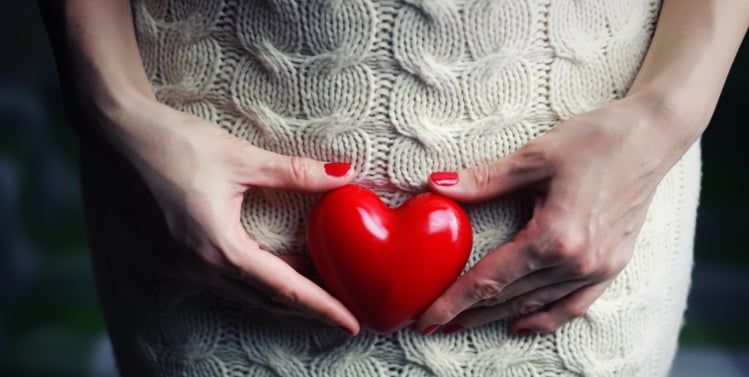Swollen lymph nodes in the groin area may have a variety of causes, some more serious than others. In this article, Flo explains the functions of the lymphatic system and what to do when something goes wrong.
-
Tracking cycle
-
Getting pregnant
-
Pregnancy
-
Help Center
-
Flo for Partners
-
Anonymous Mode
-
Flo app reviews
-
Flo Premium New
-
Secret Chats New
-
Symptom Checker New
-
Your cycle
-
Health 360°
-
Getting pregnant
-
Pregnancy
-
Being a mom
-
LGBTQ+
-
Quizzes
-
Ovulation calculator
-
hCG calculator
-
Pregnancy test calculator
-
Menstrual cycle calculator
-
Period calculator
-
Implantation calculator
-
Pregnancy weeks to months calculator
-
Pregnancy due date calculator
-
IVF and FET due date calculator
-
Due date calculator by ultrasound
-
Medical Affairs
-
Science & Research
-
Pass It On Project New
-
Privacy Portal
-
Press Center
-
Flo Accuracy
-
Careers
-
Contact Us
What Do Swollen Lymph Nodes in the Groin Mean?


Every piece of content at Flo Health adheres to the highest editorial standards for language, style, and medical accuracy. To learn what we do to deliver the best health and lifestyle insights to you, check out our content review principles.
What is the lymphatic system?
The lymphatic system contains a wide variety of tissues, cells, vessels, organs, and lymph itself, which is a fluid that eliminates waste products. Lymphatic vessels transport lymph fluid from the body’s tissues to the rest of the circulatory system.
The primary lymphoid organs include bone marrow and the thymus. Bone marrow produces lymphocytes, and the thymus creates T-lymphocytes. Both substances are types of white blood cells that allow the immune system to fight off diseases and infections.
Meanwhile, the secondary lymphoid organs are the spleen and lymph nodes. Spleen lymphocytes fight off antigens, simultaneously removing pathogens and aging red blood cells. The lymph nodes protect the immune system by filtering out cancer cells and foreign particles.
What are the lymphatic system’s main functions?
The lymphatic system is primarily responsible for:
- Removing fluid from tissues
- Transporting and absorbing fatty acids from the digestive system
- Moving lymphocytes to the lymph nodes
- Taking bacteria (via lymph fluid) to the nodes where it’s destroyed
- Carrying waste products to the nodes for elimination
- Helping the body fight off disease-causing pathogens
Blockages, infections, or cancer in the lymphatic system can make it harder for the immune system to do its job. Lymphatic issues can also cause fluid buildup and swelling.
What are lymph nodes?
Lymph nodes are small, bean-sized organs ranging in size from 0.2 to 0.4 inches (0.5 to 1 centimeter) and contain lymphoid tissues. These tissues act as filters for bacteria and waste products.
The human body has about 600 lymph nodes, mostly grouped together in clusters. Although they can be found just about anywhere, the neck, pelvis, and chest have the highest concentrations of lymph nodes.
What is lymph fluid?
Made up of white blood cells known as lymphocytes, lymph fluid contains fatty acids and cholesterol, which gives it a whitish appearance. This fluid transports both bacteria and waste to the lymph nodes for processing and removal.

What causes swollen lymph nodes?
Also referred to as lymphadenitis, the lymph nodes can swell if they’re exposed to viruses, bacteria, or fungi. Swelling of the lymphatic vessels is called lymphangitis. Lymphadenitis can also be caused by cancer, an impaired immune system, or other major illnesses.
Symptoms associated with swollen lymph nodes
The warning signs of swollen lymph nodes vary depending on the underlying reasons and the area where they’re located. Commonly observed symptoms include lymph nodes that:
- Appear enlarged
- Are painful to the touch
- Feel soft or matted together
- Look reddish in color (on the skin’s surface)
- Fill with pus that drains from the nodes to the skin
Generalized lymphadenitis could also result in the following:
- Fever
- Sweating (including night sweats)
- Hard and enlarged nodes
Seek medical attention immediately if you spot any of these warning signs. If they’re related to an infection, early diagnosis and treatment can prevent it from spreading.
Take a quiz
Find out what you can do with our Health Assistant

Track symptoms and patterns
Learn to spot patterns in your cycle as they can provide insight into underlying medical conditions
What causes swollen lymph nodes in the groin?
Swollen lymph nodes in the groin tend to feel lumpy, enlarged, and tender. The problem may be caused by sexually transmitted infections (STIs), skin conditions, mononucleosis, or HIV. Additionally, leukemia, lymphoma, cervical cancer, and certain other cancers could also explain the presence of swollen lymph nodes in the groin.
When to seek help
More often than not, swollen lymph nodes are a sign that the body is trying to fight off an infection. When the body is battling a cold or flu, for example, the nodes often swell but will return to normal after a few days.
However, if swollen lymph nodes in the groin are accompanied by additional symptoms, it might be wise to consult your health care provider. Be on the lookout for:
- Lymph nodes that have been swollen for more than 14 days
- Hard and enlarged nodes
- Persistent fever
- Night sweats, weight loss, and/or fatigue
- Breathing difficulties
- Redness and/or pain near the site of swelling

Diagnosing swollen lymph nodes
Typically, a health care provider will need to conduct a physical examination to diagnose swollen lymph nodes. The health care provider will feel the affected region to see if it’s sensitive and ask about other symptoms.
If necessary, blood tests, CT scans, or X-rays might be performed to pinpoint the source of the infection. Lastly, a lymph node biopsy is another possibility during the office visit. The procedure involves removing a sample of lymph tissue for a histopathology test.
Treatment of swollen lymph nodes in the groin
Treatment for swollen lymph nodes in the groin will depend on the exact cause. It may entail prescription medications for a bacterial, viral, or fungal infection. Or, it might include radiation or chemotherapy if the swelling is cancer related.
Preventive measures
The best way to manage swollen lymph nodes is to prevent them from occurring. Eat a healthy, well-balanced diet and make sure to practice safe sex to maintain a strong, optimally functioning immune system. These measures can help protect against the types of infections (e.g., the cold, flu, STIs, etc.) that cause swollen lymph nodes in the first place.
Takeaway
Though they don’t always point to a serious medical issue, swollen lymph nodes usually indicate some type of infection. If there’s no other underlying condition, addressing the infection should effectively reduce the swelling.
When swollen lymph nodes are caused by a larger problem, your health care provider should be able to recommend specific therapies and treatment.


Hey, I'm Anique
I started using Flo app to track my period and ovulation because we wanted to have a baby.


The Flo app helped me learn about my body and spot ovulation signs during our conception journey.


I vividly
remember the day
that we switched
Flo into
Pregnancy Mode — it was
such a special
moment.
Real stories, real results
Learn how the Flo app became an amazing cheerleader for us on our conception journey.
References
Mayo Clinic Staff. “Swollen Lymph Nodes.” Mayo Clinic, Mayo Foundation for Medical Education and Research, 9 Oct. 2019, www.mayoclinic.org/diseases-conditions/swollen-lymph-nodes/diagnosis-treatment/drc-20353906.
“Lymphadenitis.” Johns Hopkins Medicine, www.hopkinsmedicine.org/health/conditions-and-diseases/lymphadenitis.
“Swollen Glands.” HealthyChildren.org, American Academy of Pediatrics, 8 Jan. 2009, www.healthychildren.org/English/health-issues/conditions/ear-nose-throat/Pages/Swollen-Glands.aspx.




